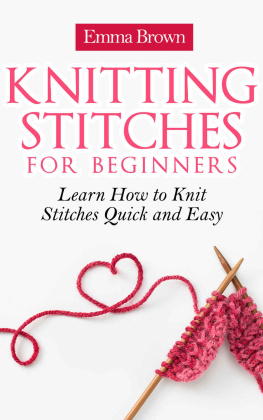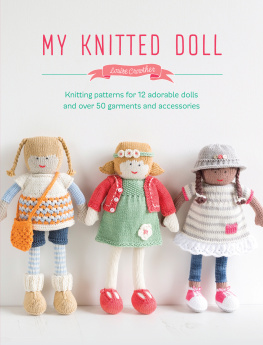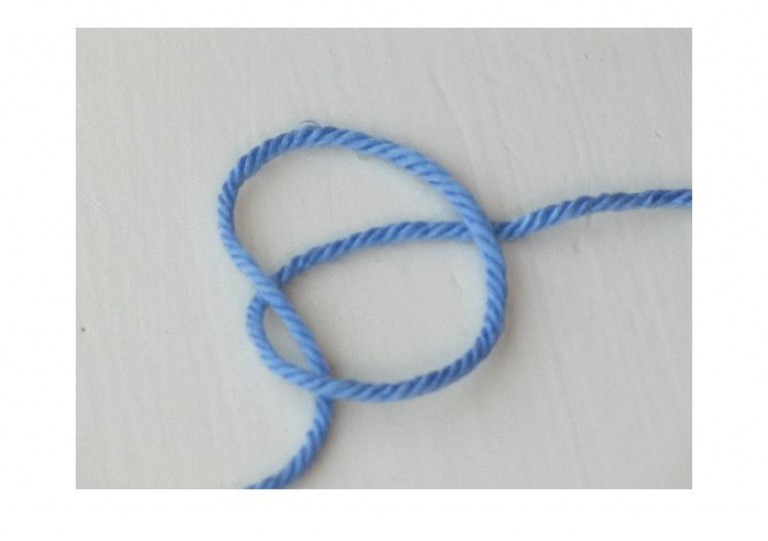Learn to Knit Doll Clothes
A Wardrobe to Fit 18" Dolls- Intermediate
By Arlene Lee
Published by Words to Knit By
Earlysville, Virginia
http://wordstoknitby.com/
Copyright 2014 Arlene Lee. All Rights Reserved. No content may be reproduced without the express written permission of the author.
First Edition
ISBN 978-0-9882172-3-2
This e-book edition was created at FoliumBookStudio.com
Learn to Knit Doll Clothes: A Wardrobe to Fit 18" Dolls- Intermediate
Dedication
This Book is dedicated to my Mom for teaching me to knit again and again, to William, Meredith, and Thomas for wearing the things I knit, and to Christopher for putting up with me when my creativity runs over and to little girls everywhere .
Table of Contents
Introduction
Reading Yarn Labels and Selecting Yarn
Get Ready...Set...Knit!
Slip Loop
Casting on
Knit
Purl
Garter Stitch
Finding the Gauge
Ribbing
Attatching a New Color/Ball of Yarn
Binding Off
Decreasing
Increasing
Shaping
Yarn-Over/ Button Holes
Picking Up Stitches Along an Edge
Lace Knitting
Finishing
How to Handle Mistakes
Twisted Stitches
Picking up Dropped Stitches
Unknitting
Incomplete Stitches
Yarn Placement Error
Crochet
Chain Crochet
Single Crochet
Stitch Abbreviation Glossary
Pattern Difficulty Ratings
Outfits:
A Day in the Sun:
Bathing Suit, Beach Wrap, and Beach Towel
A Day at the Spa:
Bathrobe
Looking for Wood Fairies:
Hoodie Pullover Sweater and Drawstring Waist Capri
Just Necessities:
Panty and Cami
I Love the Spring:
Striped Sundress and Spring Lily
Time for a Picnic:
Striped Top, Stockinette Shorts and Sun Hat
Come to My Tea Party:
Scalloped Straight Dress and Lace Socks
Summer Sweetness:
Scalloped Top and Drawstring Waist Scalloped Hem Capri
Sweet Dreams:
Scalloped Hem Nightgown and Blanket
Let's Jump in the Leaves:
Cardigan Sweater, Pants, Ribbed Hat and Scarf
Introduction
As a child, my parents would drag my siblings and me to museum after museum. As history buffs, they read every word in every museum or so it seemed to a small bored child. By the age of five, I was keenly interested in sewing and began to look for Victorian era hand sewn dresses to occupy my time in the museums. Invariably, I would wistfully gaze upon a meticulously sewn doll dress made by girls my age long ago. I was always amazed at the tiny perfect stitches and embroidery young girls had accomplished but that I could only dream of doing. So it wasnt long until I was emulating the historic little girls that had come to life in my imagination. It was only fitting that when I learned to knit as an eight year old that my first project was a doll scarf followed quickly by a bonnet and a doll sweater. While other girls were playing during recess, I was hiding in the coat room knitting. I believe in teaching children to knit things that are relevant to their lives. Large scarves are boring to knit and go on forever; at least I thought so as a child. Learning to knit doll clothes was exciting and relatively quick which inspired me to knit more. I hope you will enjoy this collection of doll clothes patterns created specifically to teach girls knitting.
All of the patterns in this book are appropriate for a young knitter and have been used to teach. If you begin with the patterns in the beginning of this book and work towards the end, you will build the skills you need to complete whole sweaters (just in miniature). Early patterns require only casting on, knitting, and binding off. Helpful video tutorials are viewable at wordstoknitby.com. Happy Knitting!!!
Reading Yarn Labels, and Selecting Yarn
Selecting Yarn
The patterns in this book are designed specifically for new knitters. Therefore, most of the outfits are knit using worsted weight yarn which will give faster results with an easy weight yarn to learn on. Cotton, wool, polyesters, and blends are suitable yarns provided they have an even consistent texture. The color should be light to medium so each stitch can be easily seen. Variegated or self striping yarns are also good as long as they are not too dark. Avoid yarns that have a confetti look, unusual or uneven textures or yarns that split easily. They may look beautiful but they will be harder to learn to knit with.
Yarn comes in different thicknesses and is referred to by its weight. Thin light weight yarns (called fingering, sock and sport weight yarns) are used for knitting lace, socks, and baby garments. Thick heavy weight yarns (called worsted and chunky weight yarns) are used to knit warm sweaters and blankets. Thicker yarns will make larger stitches and thinner yarn will make smaller stitches. The number of stitches in an inch is called the gauge. The gauge is affected by the yarn type, the knitting needle size, and the individual knitters tension. The best yarn to start with is one with the same estimated gauge on the label as is called for in the pattern.
Reading the Yarn Label
Learning to understand the yarn label will help you choose the right yarn from the beginning. The label will tell you the fiber content, the gauge, the weight, yardage, and the washing instructions. The gauge is usually given in the form of symbols. To find the symbols for the gauge, look for a square on the label. Usually inside the square or next to it there will be a needle size such as U.S. 7(American needle size) or 3.75mm (the European needle size). The square shown will be based on 4 sides. The number of stitches listed refers to how many stitches using the listed needle size it will take to knit a piece 4 wide. There will also be a number that refers to how many rows it takes to knit 4. For the purposes of this book, we will look at the horizontal stitch gauge only and not the vertical row gauge.
On the label there will also be a number that refers to a dyelot. This number goes onto every ball of yarn that was dyed at the same time. Yarn with different dyelot numbers will be a slightly different shade. The yarn absorbs dye a little differently with each batch and mixing yarn from different dyelots should be avoided. The change from one yarn dyelot to another can be very noticeable in your knitting. If your pattern requires more than one ball of yarn double check that the dyelot number on each ball is the same.
Get Ready....Set....Knit!
Slip Loop














